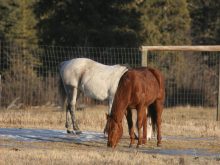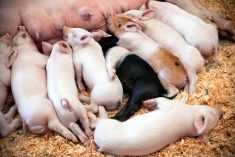CALGARY – On less than one acre of land in southern Alberta, an ordinary-looking field of potatoes has developed an extraordinary immunity to a costly disease.
Through genetic engineering, a group of Lethbridge researchers are first in the world to successfully develop an immunity to leafroll virus in Russet Burbank potatoes. At least 10 laboratories around the world are working on similar projects.
“We were the first by several years to engineer the first resistance to a luteo virus,” said plant pathologist Larry Kawchuk. He is partnered with a plant breeder to curb the spread of the disease which damages plants and can lower yields by 90 percent.
Read Also

Why selenium is still an important factor in horse health
Selenium is an essential equine trace mineral that supports antioxidant defense, muscle integrity, immune function, metabolism and thyroid activity.
Six years of work
The work, based at Agriculture Canada’s Lethbridge research station, has been ongoing for six years.
“This is something new. It’s leading edge and hopefully, it will give Canadian producers an advantage over several other countries,” he said.
Often, the threat of disease or concern over pesticide residues is used as a non-tariff barrier to keep Canadian products out of other countries. If the plant carries a resistance to the virus, fewer chemicals are needed.
Spread by aphid
Leafroll virus, which comes from the family known as luteo viruses, is spread by an aphid traditionally controlled with insecticides.
“The luteo viruses are probably, to agriculture, the worst type of viruses out there. The losses are in the millions of dollars,” Kawchuk said.
To create immunity, scientists insert a small piece of the virus’s genetic makeup into the potato’s genetic material to make the plant disease resistant. The immunity is inherited from one potato generation to the next.
The difficulty for researchers came in finding the correct genes.
“It’s like a needle in a haystack. There’s two billion base pairs of genetic information in a potato plant. The piece we stitched in is 600 base pairs,” said Kawchuk.
Several years of tests are required before the new potato is released publicly.
Micro-biologists have also identified the DNA markers (genetic code) which provide resistance to late blight in potatoes. There hasn’t yet been much genetic engineering for blight, but there could be in the future, if the problem becomes more severe.















